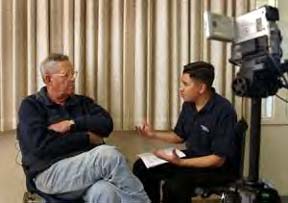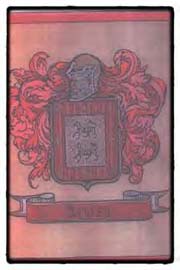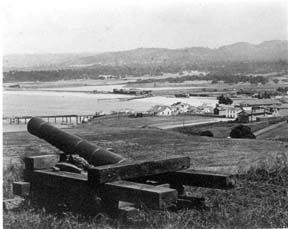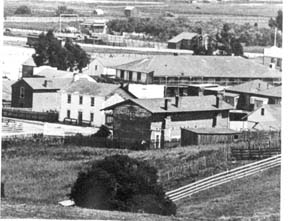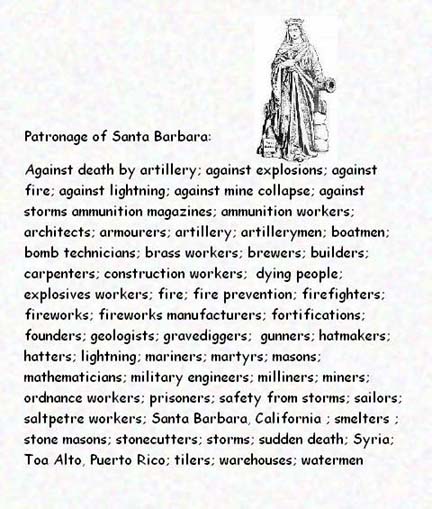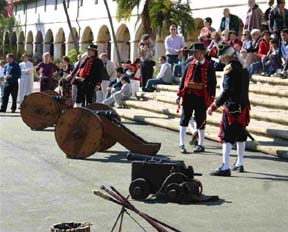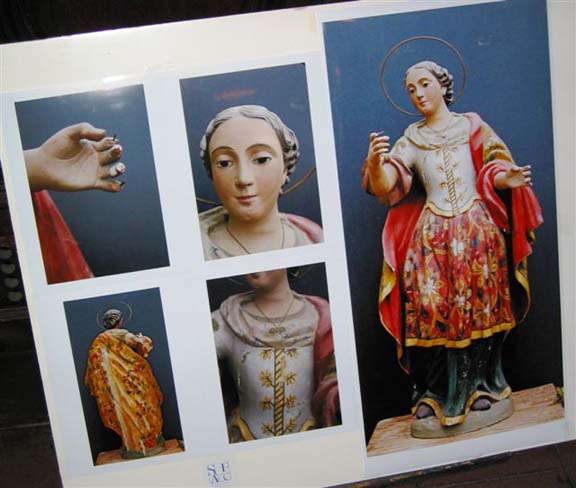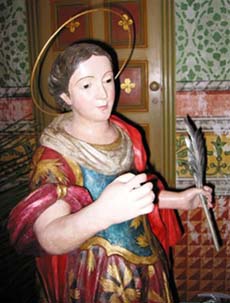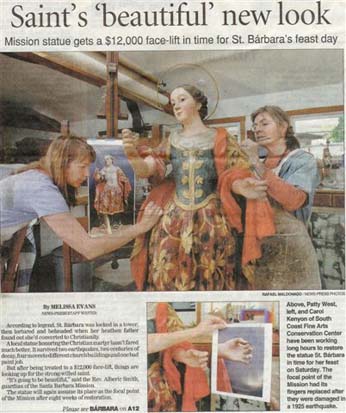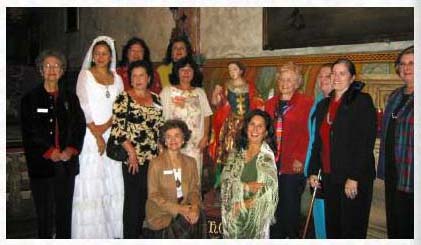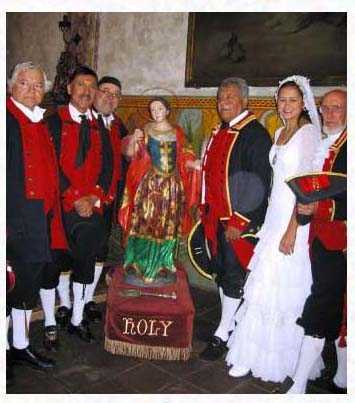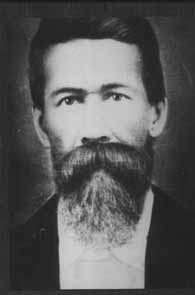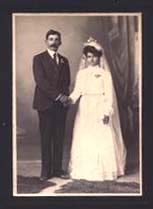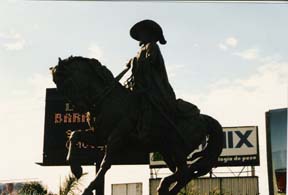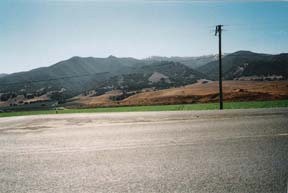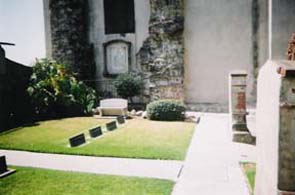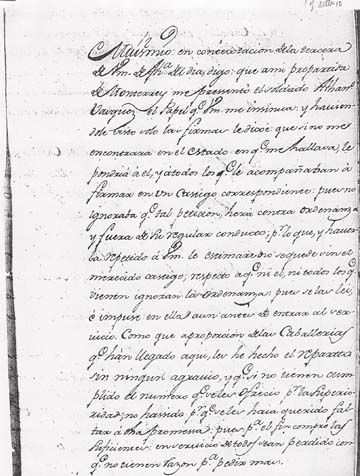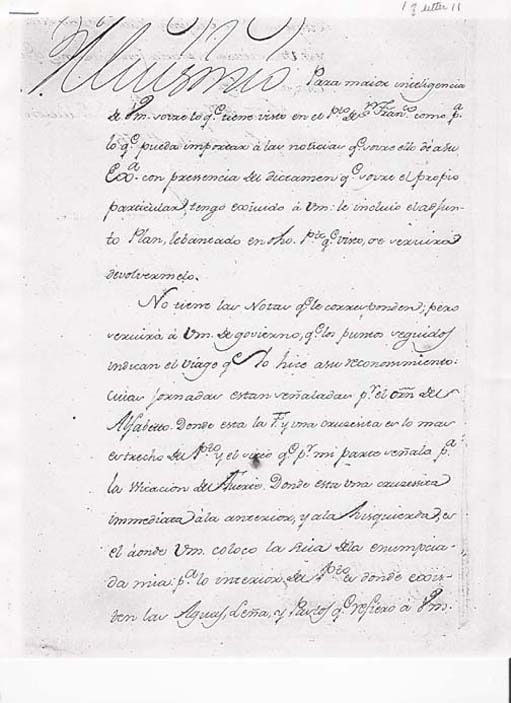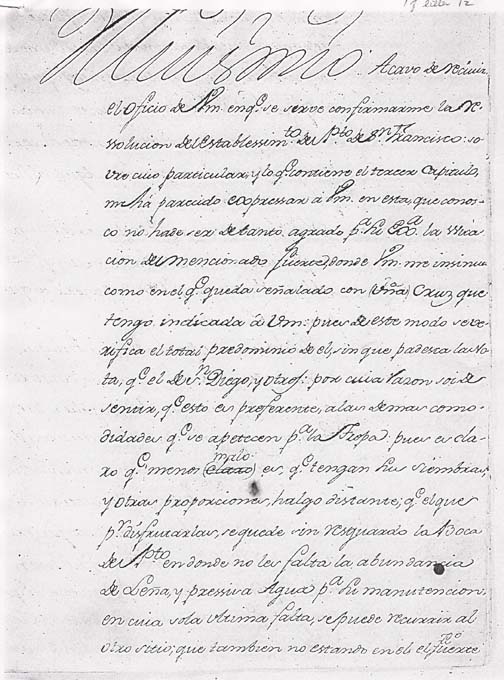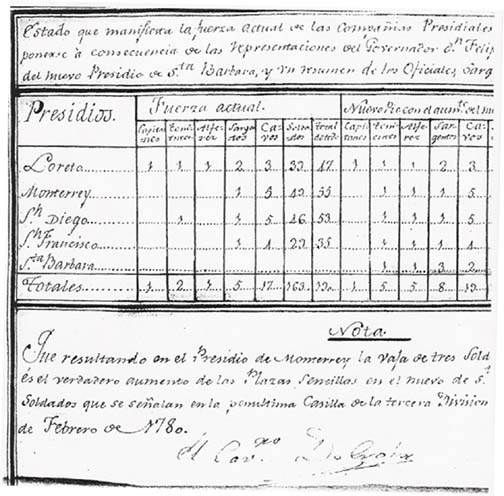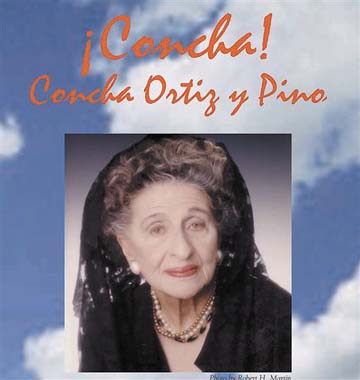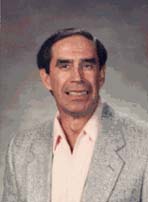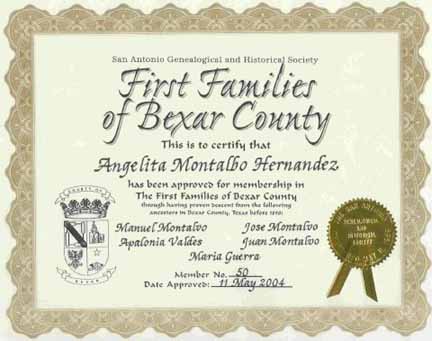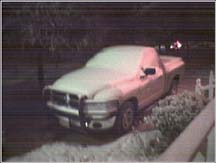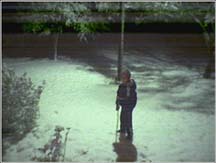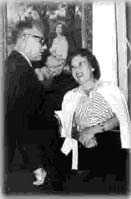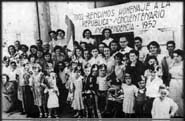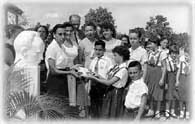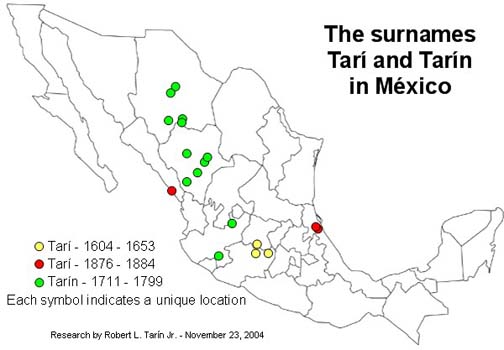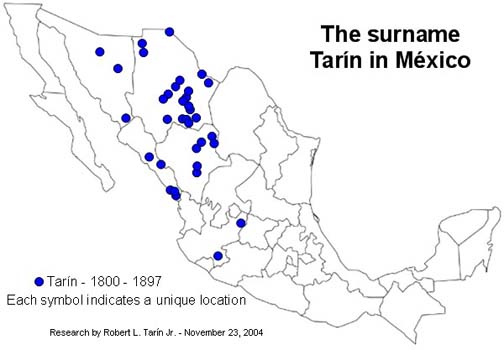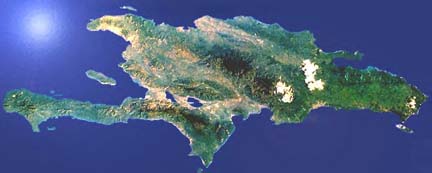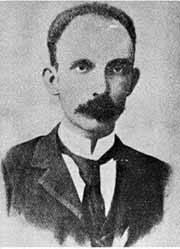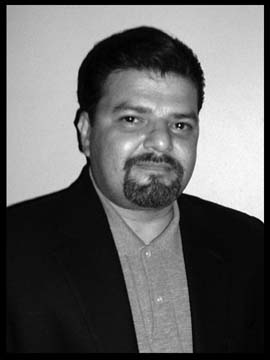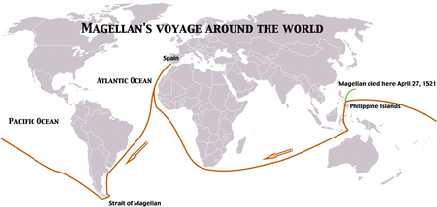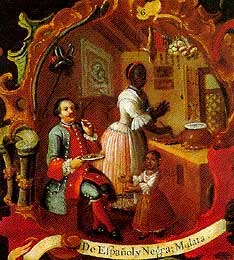|
Located in northwestern Mexico, Sonora has a surface area of 70,484
square miles (182,554 square kilometers), and takes up 9.4% of Mexico’s
national territory. Sonora occupies 180,833 square
kilometers, which amounts to 9.2% of the national territory of Mexico.
Sonora shares 588 kilometers of borders with the United
States, specifically with the States of Arizona and New Mexico. This
state also shares a common border with the Mexican states of
Chihuahua (on the east), Sinaloa (on the southeast), and Baja
California (northwest). Sonora also shares a long shoreline along the
Gulf of California.
Sonora has a total population of 2,183,108, making up 2.2% of the
national percentage of the Mexican Republic. Sonora, with
Hermosillo with its capital, is a mostly mountainous state, with vast
desert stretches, located along the Gulf of California in Northwestern
Mexico. Politically, Sonora is divided into seventy-two municipios.
During the early part of the Spanish colonial period, Sonora
belonged to the Spanish province of Nueva Vizcaya, which took up a
great deal of territory (610,000 square kilometers), most of which
today corresponds with four Mexican states. Because of its great
mineral wealth, the Spaniards took a special interest in the southern
part of Sonora. However, the indigenous people of Sonora waged a long
battle of resistance against the Spaniards, a resistance that did not
really end until the Twentieth Century. This is the history of that
resistance:
First Contact: 1531. In December 1529, the professional
lawyer turned Conquistador, Nuño Beltrán de Guzmán, led an
expedition of 300 Spaniards and 10,000 Indian allies (Tlaxcalans,
Aztecs and Tarascans) into the coastal region of what is now called
Sinaloa. Before arriving in the coastal region, Guzmán's army had
ravaged through Michoacán, Jalisco, Zacatecas, and Nayarit, provoking
the natives to give battle everywhere he went. The historian Peter
Gerhard, in The North Frontier of New Spain,
observed that Guzmán's army "engaged in wholesale slaughter
and enslavement."
In March 1531, Guzmán's army reached the site of present-day
Culiacán (now in Sinaloa), where his force engaged an army of 30,000
warriors in a pitched battle. The indigenous forces were decisively
defeated and, as Mr. Gerhard notes, the victors "proceeded to
enslave as many people as they could catch." The indigenous
people confronted by Guzmán belonged to the Cáhita language group.
Speaking eighteen closely related dialects, the Cáhita peoples of
Sinaloa and Sonora numbered about 115,000 and were the most numerous
of any single language group in northern Mexico. These Indians
inhabited the coastal area of northwestern Mexico along the lower
courses of the Sinaloa, Fuerte, Mayo, and Yaqui Rivers.
During his stay in Sinaloa, Guzmán's army was ravaged by an epidemic
that killed many of his Amerindian auxiliaries. Finally, in October
1531, after establishing San Miguel de Culiacán on the San Lorenzo
River, Guzmán returned to the south, his mostly indigenous army
decimated by hunger and disease. But the Spanish post at Culiacán
remained, Mr. Gerhard writes, as "a small outpost of Spaniards
surrounded on all sides but the sea by hostile Indians kept in a state
of agitation" by the slave-hunting activities of the Spaniards.
Nuño de Guzmán was eventually brought to justice for his genocidal
actions.
As the Spaniards moved northward they found an amazing diversity of
indigenous groups. Unlike the more concentrated Amerindian groups of
central Mexico, the Indians of the north were referred to as "ranchería
people" by the Spaniards. Their fixed points of settlements (rancherías)
were usually scattered over an area of several miles and one dwelling
may be separated from the next by up to half a mile. The renowned
anthropologist, Professor Edward H. Spicer (1906-1983), writing in Cycles
of Conquest: The Impact of Spain, Mexico, and the United States on the
Indians of the Southwest, 1533-1960, stated that most
ranchería people were agriculturalists and farming was their primary
activity.
Hurdaide's Offensive in Sinaloa (1599-1600). In 1599,
Captain Diego de Hurdaide established San Felipe y Santiago on the
site of the modern city of Sinaloa. From here, Captain Hurdaide waged
a vigorous military campaign that subjugated the Cáhita-speaking
Indians of the Fuerte River - the Sinaloas, Tehuecos, Zuaques, and
Ahomes. These indigenous groups, numbering approximately 20,000
people, resisted strongly.
Initial Contact with the Mayo Indians (1609-1610). The
Mayo Indians were an important Cáhita-speaking tribe occupying some
fifteen towns along the Mayo and Fuerte rivers of southern Sonora and
northern Sinaloa. As early as 1601, they had developed a curious
interest in the Jesuit-run missions of their neighbors. The Mayos sent
delegations to inspect the Catholic churches and, as Professor Spicer
observes, "were so favorably impressed that large groups of Mayos
numbering a hundred or more also made visits and became acquainted
with Jesuit activities." As the Jesuits began their spiritual
conquest of the Mayos, Captain Hurdaide, in 1609, signed a peace
treaty with the military leaders of the Mayos.
Spanish Contact with the Yaqui Indians (1610). At
contact, the Yaqui Indians occupied the coastal region of Sinaloa
along the Yaqui River. Divided into eighty autonomous communities,
their primary activity was agriculture. Although the Yaqui Indians had
resisted Guzmán's advance in 1531, they had welcomed Francisco de
Ibarra who came in peace in 1565, apparently in the hopes of winning
the Spaniards as allies in the war against their traditional enemies,
the Mayos.
In 1609, as Captain Hurdaide became engaged with the pacification of
the Ocoronis (another Cahita-speaking group of northern Sinaloa), he
reached the Yaqui River, where he was confronted by a group of Yaquis.
Then, in 1610, with the Mayo and Lower Pima Indians as his allies,
Captain Hurdaide returned to Yaqui territory with a force of 2,000
Indians and forty Spanish soldiers. He was soundly defeated. When he
returned with another force of 4,000 Indian foot soldiers and fifty
mounted Spanish cavalry, he was again defeated in a bloody daylong
battle.
Conversion of the Mayo Indians (1613-1620). In 1613, at
their own request, the Mayos accepted Jesuit missionaries. Soon after,
the Jesuit Father Pedro Mendez established the first mission in Mayo
territory. In the first fifteen days, more than 3,000 persons received
baptism. By 1620, with 30,000 persons baptized, the Mayos had been
concentrated in seven mission towns.
Conversion of the Yaqui Indians (1617-1620). In 1617,
the Yaquis, utilizing the services of Mayo intermediaries, invited the
Jesuit missionaries to begin their work among them. Professor Spicer
noted that after observing the Mayo-Jesuit interactions that started
in 1613, the Yaquis seemed to be impressed with the Jesuits. Bringing
a message of everlasting life, the Jesuits impressed the Yaquis with
their good intentions and their spirituality. Their concern for the
well being of the Indians won the confidence of the Yaqui people. In
seeking to protect the Yaqui from exploitation by mine owners and
encomenderos, the Jesuits came into direct conflict with the Spanish
political authorities. From 1617 to 1619, nearly 30,000 Yaquis were
baptized. By 1623, the Jesuits had reorganized the Yaquis from about
eighty rancherías into eight mission villages.
Detachment of the Province of Sinaloa and Sonora (1733). In
1733, Sinaloa and Sonora were detached from Nueva Vizcaya and given
recognition as the province of Sonora y Sinaloa. Ms. Deeds commented
that this detachment represented a recognition of "the growth of
a mining and ranching secular society in this northwestern
region."
Rebellion of the Yaqui, Pima, and Mayo Indians - Sinaloa and
Sonora (1740). The Yaqui and Mayo Indians had lived in
peaceful coexistence with the Spaniards since the early part of the
Seventeenth Century. Ms. Deeds, in describing the causes of this
rebellion, observes that the Jesuits had ignored "growing Yaqui
resentment over lack of control of productive resources." During
the last half of the Seventeenth Century, so much agricultural surplus
was produced that storehouses needed to be built. These surpluses were
used by the missionaries to extend their activities northward into the
California and Pima missions. The immediate cause of the rebellion is
believed to have been a poor harvest in late 1739, followed in 1740 by
severe flooding which exacerbated food shortages.
Ms. Deeds also points out that the "increasingly bureaucratic and
inflexible Jesuit organization obdurately disregarded Yaqui demands
for autonomy in the selection of their own village officials."
Thus, this rebellion, writes Ms. Deeds, was "a more limited
endeavor to restore the colonial pact of village autonomy and
territorial integrity." At the beginning of the revolt, an
articulate leader named El Muni emerged in the Yaqui community. El
Muni and another Yaqui leader, Bernabé, took the Yaquis' grievances
to local civil authorities. Resenting this undermining of their
authority, the Jesuits had Muni and Bernabé arrested.
The arrests triggered a spontaneous outcry, with two thousand armed
indigenous men gathering to demand the release of the two leaders. The
Governor, having heard the complaints of both sides, recommended that
the Yaqui leaders go to Mexico City to testify personally before the
Viceroy and Archbishop Vizrón. In February 1740, the Archbishop
approved all of the Yaqui demands for free elections, respect for land
boundaries, that Yaquis be paid for work, and that they not be forced
to work in mines.
The initial stages of the 1740 revolt saw sporadic and uncoordinated
activity in Sinaloa and Sonora, primarily taking place in the Mayo
territory and in the Lower Pima Country. Catholic churches were burned
to the ground while priests and settlers were driven out, fleeing to
the silver mining town at Alamos. Eventually, Juan Calixto raised an
army of 6,000 men, composed of Pima, Yaqui and Mayo Indians. With this
large force, Calixto gained control of all the towns along the Mayo
and Yaqui Rivers.
Agustín de Vildósola defeated the
insurgents. The rebellion, however, had cost the lives of a thousand
Spaniards and more than 5,000 Indians. After the 1740 rebellion, the
new Governor of Sonora and Sinaloa began a program of secularization
by posting garrisons in the Yaqui Valley and encouraging Spanish
residents to return to the area of rebellion. The Viceroy ordered the
partition of Yaqui land in a "prudent manner." The Yaquis
had obtained a reputation for being courageous warriors during the
rebellion of 1740 and the Spanish handled them quite gingerly during
the late 1700s. As a result, the government acquisition of Yaqui lands
did not begin began until 1768.
Pima Rebellion of 1751-1752. The Pima Indians have lived
for many centuries in scattered locations throughout what are today
the western two-thirds of southern Arizona and northern Sonora. While
the Pimas Altos (Upper Pima Indians) lived in the north, their
linguistic brethren, the Pima Bajo (Lower Pima) lived farther south in
lower Sonora.
During the 1740s, the Pima Indians began to feel agitated by the
presence of the Spaniards in their territory. In November 1751, under
the leadership of a Pima leader, Captain-General Luís Oacpicagigua,
the Pima rose in revolt. Within a few days more than a hundred
settlers, miners, and ranchers were killed. Churches were burned, and
two priests were also killed. However, on January 4, 1752,
approximately 2,000 northern Pimans attacked less than one hundred
Spaniards, only to be repulsed with a loss of forty-three dead. The
Pima Revolt lasted only four months, ending with the surrender of
Luís Oacpicagigua, who offered himself in sacrifice and atonement for
his whole people, endeavoring to spare them the consequences of their
uprising.
Apache Offensives in Sonora and Chihuahua (1751-1774).
The word "Apache" comes from the Yuma word for
"fighting-men". It also comes from a Zuni word meaning
"enemy". Cynthia Radding, the author of The Colonial
Pact and Changing Ethnic Frontiers in Highland Sonora, 1740-1840, refers
to the Apaches as "diverse bands" of hunter-gatherers
"related linguistically to the Athapaskan speakers of Alaska and
western Canada." The Apaches were composed of six regional
groups: (1) the Western Apaches (Coyotero) of eastern Arizona; (2) the
Chiricahua of southwestern New Mexico, southeastern Arizona, Chihuahua
and Sonora; (3) the Mescalero of southern New Mexico; (4) the
Jicarilla of Colorado, northern New Mexico and northwestern Texas; (5)
the Lipan Apache of New Mexico and Texas; and (6) the Kiowa Apache of
Colorado, Oklahoma, and Texas.
The first Apache raids on Sonora appear to have taken place during
the early part of the late Seventeenth Century. In fact, to counter
the early Apache thrusts into Sonora, presidios were established at
Janos (1685) in Chihuahua and at Fronteras (1690) in northern Opata
country. The Apache depredations continued into the Eighteenth Century
and prompted Captain Juan Mateo Mange in 1737 to report that
"many mines have been destroyed, 15 large estancias along the
frontier have been totally destroyed, having lost two hundred head of
cattle, mules, and horses; several missions have been burned and two
hundred Christians have lost their lives to the Apache enemy, who
sustains himself only with the bow and arrow, killing and stealing
livestock. All this has left us in ruins."
In the 1750s, the fiercest of all Apache tribes, the Chiricahua, began
hunting and raiding along the mountainous frontier regions of both
Sonora and Chihuahua. In 1751, the Sonorans mounted a punitive
campaign against the Chiricahua, capturing two of their leaders. In
1753 and 1754, the Apaches once again attacked the settlements and
ranches near Valle de San Buenaventura and Casas Grandes. As a result,
another expedition of 190 Sonorans, 140 Opata allies, and 86 Spanish
troops from Chihuahua went out in search of the marauders during 1756.
When Apache raiders hit the region south of San Buenaventura in late
1760, an expedition of 100 Spanish troops and 130 Indian auxiliaries
attacked the raiders.
The pressure of constant warfare waged against these nomads led the
Spanish military to adopt a policy of maintaining armed garrisons of
paid soldiers (presidios) in the problem areas. By 1760, Spain boasted
a total of twenty-three presidios in the frontier regions. But the
Apaches, responding to these garrisons, developed "important
adaptations in their mode of subsistence, warfare, and social
organization. They became highly skilled horsemen whose mobility
helped them elude presidio troops.
Professor Robert Salmon, the author of Indian Revolts in
Northern New Spain: A Synthesis of Resistance (1680-1786)
writes that the continuing Indian attacks eventually "broke the
chain of ineffective presidios established to control them." As
the end of the Eighteenth Century approached, the Apaches represented
a major threat to the continued Spanish occupation of Sonora and
Chihuahua. And, as Professor Salmon concludes, "Indian warriors
exacted high tolls in commerce, livestock, and lives." The damage
caused by Apache raids was calculated in hundreds of thousands of
pesos, and many ranches, farms and mining centers throughout Chihuahua
had to be abandoned.
Professor Griffen mentions that the Apache raiders in Chihuahua
"displaced or assimilated other groups of hunter-gatherers known
as the Sumas, Mansos, Chinarras, Sumanos, Jocomes, and Janos." As
a result, Ms. Radding observes, the Spaniards, Pimas, and Opatas found
it necessary to form "an uneasy, but necessary, alliance against
the Apaches." The Opata Indians controlled the major river
valleys of Central Sonora.
Seri Offensives (1757-1766). At the time of contact, the
Seri Indians lived along the arid central coast of Sonora and shared
boundaries with the Yaqui on the south and the Pima and Pápago on the
east and north. The first known battle between the Seris and the
Spaniards took place in 1662. A century later, on November 3, 1757, a
war party of Seris and rebel northern Pimans struck the settlement of
San Lorenzo (Sonora), killing thirty-two persons. This brazen affront
called for military reprisal, and the Spaniards collected troops to
chase the offenders back to the coastal area.
In 1760, Captain Juan Bautista de Anza took over command of the Tubac
Presidio in Southern Arizona and embarked into Seri country near the
Gulf of California. In 1761, presidios were denuded of troops in order
to supply personnel and materials for the offensive. A force of 184
Spanish soldiers, 217 allied Indians and twenty citizens went on the
offensive against the Seris. They succeeded in slaying forty-nine
Seris and capturing sixty-three, while recovering 322 horses.
The Jesuits are Banished (1767). In 1767 King Carlos
III, for political reasons, abruptly banished the Jesuits from all his
realms. Hundreds of mission establishments, schools and colleges had
to be turned over to other missionary orders or converted to other
uses. The Franciscans who took over the missionary effort in Sonora
and Chihuahua inherited all the woes that had frustrated the Jesuits:
restless neophytes, Apache hostility, disease, encroaching settlers,
and lack of government support.
The Sonora Campaign (1767-1771). The Sonora Expedition
of 1767 was led by Colonel Domingo Elizondo. The expedition was the
result of demands by settlers in Sonora who had for decades suffered
raids by warring ranchería groups of that province. Pacification of
rebel Indian warriors of the coastal region was the main objective of
the expedition that was comprised of an extraordinary 1,100 men. This
expedition represented the greatest military effort yet seen in this
Spanish frontier province.
During 1768, Colonel Elizondo's forces split up in an attempt to drive
the Seri Indians into one area where a decisive battle could be
fought. This mission failed to achieve its objective. The Indians, now
well-trained in the art of hit-and-run and ambush style warfare,
avoided direct confrontations with large Spanish armies. In 1771,
after thirty-eight months of fighting, the Central Government in
Mexico City put a stop to the Sonora Campaign, which was regarded as
both costly and unsuccessful.
Peace Negotiations with the Apaches and Comanches (1777 - 1796).
In 1777-78, Teodoro de Croix, the Commandant General of the Interior
(frontier) provinces of Nueva España, called together three great
conferences to discuss the Apache problem. "The Apache problem
had existed on the frontier since the Spanish entered the
country," writes Mr. Fehrenbach, "and each year it grew
worse. The Apaches had five thousand warriors, armed with bows,
lances, and firearms. They attacked only by surprise and only when
they had the advantage."
Croix determined that it would take an army of at least 3,000 soldiers
to confront and eliminate the Apache threat. He thus came to the
conclusion that an alliance with the Comanches - the dreaded enemies
of the Apaches - would bring about a resolution of the Apache problem.
However, bogged down with "bureaucratic delays and
obfuscation," de Croix was never able to get the money or men to
implement this plan.
In 1779, Juan Bautista de Anza, the commander of the Tubac Presidio,
gathered together an army of 600 men, which included 259 Amerindian
auxiliaries and Spanish civilians, and marched north to the Colorado
Plateau, in search of Comanches. Having estimated the Comanche
population at 30,000 warriors spread across a large area, Anza
attacked and surprised several bands of Comanches during 1783-84. Mr.
Fehrenbach writes that Anza, operating with native allies and
utilizing Indian tactics, earned the respect of the Comanches.
Finally, in 1785, the Comanches started negotiations with Anza. The
following year, a peace treaty was signed in which several of the
Comanche tribes pledged to assist the Spaniards against the Apaches.
Through this agreement, Mr. Fehrenbach observed, "the Comanches
could now ride openly into Spanish settlements [and] New Mexican
traders could move safely on the Comanche plains."
In 1786, the Viceroy of Nueva España, Bernardo de Galvez, instituted
a series of reforms for the pacification of the frontier. His
Instruccion of that year called for the formation of peace
establishments (establecimientos de paz) for Apaches
willing to settle down and become peaceful. Oscar J. Martínez, the
author of Troublesome Border, described Spain's new
policy of "pacification by dependency" toward the indigenous
peoples. "Henceforth," writes Mr. Martínez, "Spaniards
would endeavor to make treaties with individual bands, persuade them
to settle near military stations where they would receive food
rations, give them low-quality weapons for hunting, encourage trade,
and use 'divide and conquer' tactics where appropriate."
Soon, several Apache bands were induced to forgo their raiding and
warfare habits in exchange for farmlands, food, clothing, agricultural
implements and obsolete hunting arms. Mr. Martínez concludes:
"The Spaniards hoped that these measures would result in the
establishment of a dependency relationship, which is precisely what
materialized, and for nearly twenty-five years peaceful relations came
to exist between the two groups."
In February 1786, the Spaniards established a general peace with the
Comanches. At the same time, the level of Apache hostilities in both
Chihuahua and Sonora decreased, giving way to small-scale skirmishes.
However, the peace policy did not last and Apaches began a new series
of raids. In eighteen months of action between April 19, 1786 and
December 31, 1787, Apaches caused the deaths of 306 people and took
thirty prisoners. In the same period, the Spanish forces had killed
326 Apaches and captured 365 prisoners.
Eventually, however, the Apaches were brought back to the peace table.
In the years to follow, peaceful Apaches settled down at Janos,
Bacoachi, Carrizal, San Buenaventura and Namiquipa. By 1796, Antonio
Cordero y Bustamante was reporting that this policy had met with
considerable success on the frontier. However, Professor William B.
Griffen, the author of Apaches at War and Peace: The Janos
Presidio, 1750-1858, writes that "because of high
administrative costs, and apparently because of restricted funds on
the frontier due to the war with France," Spanish authorities
started removing the peaceful Apaches from the presidios and urged
them to return to the hinterland but to continue to keep the peace.
Yaqui, Mayo and Opata Rebellions of 1825-1833. After Mexico
gained independence in 1822, the Yaquis became citizens of a new
nation. During this time, there appeared a new Yaqui leader. Ms. Linda
Zoontjens, the author of A Brief History of the Yaqui and Their
Land, referred to Juan de la Cruz Banderas as a
"revolutionary visionary" whose mission was to establish an
Indian military confederation. Once again, the Mayo Indians joined
their Yaqui neighbors in opposing the central authorities. With a
following of 2,000 warriors, Banderas carried out several raids. But
eventually, Banderas made an arrangement with the Government of
Sonora. In exchange for his "surrender," Banderas was made
the Captain-General of the Yaqui Militia.
By early 1832, Banderas had formed an alliance with the Opatas.
Together, the Opatas and Yaquis were able to field an army of almost
2,500 warriors, staging repeated raids against haciendas, mines and
towns in Sonora. However, the Mexican army continued to meet the
indigenous forces in battle, gradually reducing their numbers.
Finally, in December 1832, volunteers tracked down and captured
Banderas. The captive was turned over to the authorities and put on
trial. A month later, in January 1833, Banderas was executed, along
with eleven other Yaqui, Mayo and Opata leaders who had helped foment
rebellion in Sonora.
The Yaqui people, after the capture and execution of Banderas,
subsided into a tense, uneasy existence. Some, during periods of food
shortage, would take up "peaceful" residence outside the
presidios, to ask for rations. Others undertook low-level
raiding.
Confrontations with Comanches - Sonora, Chihuahua and Durango
(1834-1853). In 1834, Mexico signed its third peace treaty
with the Comanches of Texas. However, almost immediately Mexico
violated the peace treaty and the Comanches resumed their raids in
Texas and Chihuahua. In the following year, Sonora, Chihuahua and
Durango reestablished bounties for Comanche scalps. Between 1848 and
1853, Mexico filed 366 separate claims for Comanche and Apache raids
originating from north of the American border.
A government report from 1849 claimed that twenty-six mines, thirty
haciendas, and ninety ranches in Sonora had been abandoned or
depopulated between 1831 and 1849 because of Apache depredations. In
1852, the Comanches made daring raids into Coahuila, Chihuahua,
Sonora, and Durango and even Tepic in Jalisco, some 700 miles south of
the United States-Mexican border.
The Yaqui Indians (1838-1868). After the death of
Banderas, the Yaqui Indians attempted to forge alliances with anyone
who promised them land and autonomy. They would align themselves with
the Centralists or Conservatives as long as those groups protected
their lands from being encroached upon. But when General José Urrea
took power in 1841, he oversaw the division of Yaqui lands from
communal plots into private plots.
Governor Ignacio Pesqueira of Sonora drew up a list of preventative
measures to be used against the Yaquis, Opatas and their allies. These
orders called for the execution of rebel leaders. In addition,
hacienda owners were required to make up lists of all employees,
including a notation for those who were suspected of taking part in
rebellious activity against the civil government. These measures were
ineffective in dealing with the growing unrest among the Yaqui and
Opatas.
In 1867 Governor Pesqueira of Sonora organized two military
expeditions against the Yaquis under the command of General Jesus
Garcia Morales. The expeditions marched on Guaymas and Cócorit, both
of which lay in the heart of Yaqui territory. These expeditions met at
Medano on the Gulf Coast near the Jesuit-founded Yaqui town of Potam.
The two expeditions, totaling about 900 men, did not meet with any
organized resistance. Instead, small parties of Yaquis resisted their
advance. By the end of the year, the Mexican forces had killed many
Yaquis. The troops confiscated much livestock, destroyed food
supplies, and shot most of the prisoners captured.
Apache Depredations - Chihuahua and Sonora (1836-1852).
In 1836, the famous Chiricahua leader, Cochise, took part in the
signing of a peace treaty at Arizpe, Sonora. The peace did not last
for too many years. From 1847 into the 1850s, Sonora was laid to waste
by the Chiricahuas, whose leader was Miguel Narbona, who died in 1856.
Geronimo, the legendary Bedonkohe Apache leader of the Chiricahua
Apaches, led his people in raids against the United States military
and Mexican federal forces. Born sometime around 1823, Geronimo's real
name was Goyahkla ("He Who Yawns"). In 1851, Geronimo was
leading a party from the Mogollon Mountains of New Mexico into Mexico
to trade at Casas Grandes in Chihuahua. His mother, wife, and three
children were with him. His band set up a village on the outskirts of
Casas Grandes.
One day he and some others were returning from town and found that
their village had been attacked by Mexican troops. The sentinels had
been killed, the ponies stolen, weapons taken, supplies destroyed, and
many women and children had been killed. Among the murdered were his
mother, wife, and children. From this day forward, Geronimo was a
changed person. He is said to have become bitter and quarrelsome and
determined to oppose the nations he saw as his enemies.
Over the next few months he met with other Apache leaders,
including Cochise, the leader of the Chiricahuas. Within four months
of the massacre, Geronimo and the other leaders prepared for revenge.
In January 1852, near Arizpe, Sonora, Geronimo battled about a hundred
Mexican irregular soldiers.
Yaqui Insurgencies - Sonora (1868-1875). During these
years, the Yaquis regained their strength and periodically attacked
Mexican garrisons in their territory. In March 1868, six hundred
Yaquis arrived near the town of Bacum in the eastern Yaqui country to
ask the local field commander for peace terms. However, the Mexican
officer, Colonel Bustamante, arrested the whole group, including women
and children. When the Yaquis gave up forty-eight weapons, Bustamante
released 150 people but continued to hold the other 450 people. Taking
his captives to a Yaqui church in Bacum as prisoners of war, he was
able to identify ten of the captives as leaders. All ten of these men
were shot without a trial.
Four hundred and forty people were left languishing in the church
overnight, with Bustamante's artillery trained on the church door to
discourage an escape attempt. However, during the night a fire was
started in the church. The situation inside the church turned to chaos
and confusion, as some captives desperately tried to break down the
door. As the Yaquis fled the church, several salvos fired from the
field pieces killed up to 120 people.
In 1875, the Mexican government suspected that a Yaqui insurrection
was brewing. In an attempt to pacify the Yaquis, Governor Jose J.
Pesqueira ordered a new campaign, sending five hundred troops from the
west into the Yaqui country. A force of 1,500 Yaquis met the Mexican
troops at Pitahaya. In the subsequent battle, the Yaquis are believed
to have lost some sixty men.
Cajeme and the Yaqui Rebellions During the Porfiriato
(1876-1887). During the reign of Porfirio Díaz, the ongoing
struggle for autonomy and land rights dominated Yaqui-Mexican
relations. An extraordinary leader named Cajeme now took center stage
in the Yaquis' struggle for autonomy. Cajeme, whose name meant
"He who does not drink," was born José María Leyva. He
learned Spanish and served in the Mexican army. Although Cajeme's
parents were Yaqui Indians, he had become very Mexicanized. Cajeme's
military service with the Mexican army was so exemplary that he was
given the post of Alcalde Mayor of the Yaqui River area. Soon after
receiving this promotion, however, Cajeme announced his intention to
withdraw recognition of the Mexican Government if they did not grant
the Yaquis self-government. Cajeme galvanized a new generation of
Yaquis and Mayos and led his forces against selected towns in Yaqui
Country.
Mexican Offensives Against the Yaquis (1885-1901). Dr.
Hatfield, in studying the struggle over Indian lands, wrote,
"Rich Yaqui and Mayo valley lands possessed a soil and climate
capable of growing almost any crop. Therefore, it was considered in
the best national interest to open these lands to commercial
development and foreign investors." During the 1880s, the
Governor of Sonora, Carlos Ortiz, became concerned about his state's
sovereignty over Indian lands. In the hopes of seizing Indian
Territory, Ortiz withdrew his state troopers from the border region
where they had been fighting the Apache Indians. In the meantime,
Cajeme's forces began attacking haciendas, ranches and stations of the
Sonora Railroad in the Guaymas and Alamos districts.
With rebel forces causing so much trouble, General Luis Torres, the
Governor of Sonora, petitioned the Federal Government for military
aid. Recognizing the seriousness of this rebellion, Mexican President
Porfirio Díaz authorized his Secretary of War to begin a campaign
against the Sonoran rebels. In 1885, 1,400 federal troops arrived in
Sonora to help the Sonoran government put down the insurrection.
Together with 800 state troops, the federal forces were organized into
an expedition, with the intention of meeting the Yaquis in
battle.
During 1886, the Yaquis continued to fortify more of their positions.
Once again, Mexican federal and state forces collaborated by making
forays into Yaqui country. This expedition confiscated more than
20,000 head of livestock and, in April 1886, occupied the Yaqui town
of Cócorit. On May 5, the fortified site of Anil was captured after a
pitched battle. After suffering several serious military reverses, the
Yaqui forces fell back to another fortified site at Buatachive, high
in the Sierra de Bacatet, to make a last stand against the Mexican
forces.
Putting together a fighting force of 4,000 Yaquis, along with
thousands of Yaqui civilians, Cajeme prepared to resist. On May 12,
after a four-day siege, Mexican troops under General Angel Martinez,
attacked Buatachive. In a three-hour battle, the Mexican forces killed
200 Yaqui soldiers, while capturing hundreds of women and children.
Cajeme and a couple thousand Yaquis managed to escape the siege.
After this staggering blow, Cajeme divided his forces into small bands
of armed men. From this point on, the smaller units tried to engage
government troops in small skirmishes. Although Cajeme asked the
Federal authorities for a truce, the military leaders indicated that
all Yaqui territory was part of the nation of Mexico. After a few
months, expeditions into the war zone led to the capture of four
thousand people. With the end of the rebellion in sight, General Luis
Torres commenced with the military occupation of the entire Yaqui
Nation.
With the end of hostilities, Mexican citizens began filtering into
Yaqui territory to establish permanent colonies. On April 12, 1887,
nearly a year after the Battle of Buatachive, Cajeme was apprehended
near Guaymas and taken to Cócorit where he was to be executed before
a firing squad in 1887. After being interviewed and photographed by
Ramon Corral, he was taken by steamboat to Medano but was shot while
trying to escape from the soldiers.
Government forces, searching for and confronting armed Yaquis, killed
356 Yaqui men and women over a period of two years. A comprehensive
search for the Yaqui holdouts in their hiding places forced the rebels
into the Guaymas Valley where they mingled with Yaqui laborers on
haciendas and in railroad companies. As a result, the Mexican
Government accused owners of haciendas, mining and railroad companies
of shielding criminal Yaqui fugitives. Circulars were issued which
forbade the owners from giving money, provisions, or arms to the
rebels. During this time, some Yaquis were able to slip across the
border into Arizona to work in mines and purchase guns and ammunition.
The Mexican border guards were unable to stop the steady supply of
arms and provisions coming across the border from Arizona. Eventually,
Mexico's Secretary of War ordered the recruitment of Opatas and Pimas
to hunt down the Yaqui guerillas.
In 1894-95, Luis Torres instituted a secret police system and carried
out a meticulous survey of the entire Sierra de Bacatete, noting
locations of wells supplying fresh water as well as all possible
entrances and exits to the region. Renegade bands of Yaquis, familiar
with the terrain of their own territory, were able to avoid capture by
the government forces. During the campaign of 1895-97, captured rebels
were deported to southern Mexico to be drafted into the army.
In 1897, the commander of the campaign forces, General Torres
initiated negotiations with the Yaqui leader Tetabiate, offering the
Yaquis repatriation into their homeland. After a number of months of
correspondence between the guerilla leader and a colonel in one of the
regiments, a place was set for a peace agreement to be signed. On May
15, 1897, Sonora state officials and the Tetabiate signed the Peace of
Ortiz. The Yaqui leader, Juan Maldonado, with 390 Yaquis, consisting
of 74 families, arrived from the mountains for the signing of the
peace treaty.
In the six years following the signing of peace, Lorenzo Torres, the
Governor of Sonora, made efforts to complete the Mexican occupation of
Yaqui territory. Ignoring the terms of the peace treaty, four hundred
Yaquis and their families defied the government and assembled in the
Bacatete Mountains. Under the command of their leader Tetabiate, the
Yaquis sustained themselves by making nighttime raids on the haciendas
near Guaymas.
In the meantime, Federal troops and army engineers, trying to survey
the Yaqui lands for distribution, found the terrain to be very
difficult and were constantly harassed by defiant rebel forces. The
government could not understand the Yaqui refusal to divide their land
and become individual property owners. Their insistence of communal
ownership based on traditional indigenous values also supported their
objection to having soldiers in their territory. However, resentful of
the continuing military occupation of their territory, the Yaqui
colonies of Bácum and Vícam took up arms in 1899. Large detachments
of rebel Yaqui forces confronted troops on the Yaqui River and
suffered large casualties. Afterwards, a force of three thousand fled
to the sierras and barricaded themselves on a plateau called Mazocoba
where they were defeated by government troops.
When Tetabiate and the rebel forces fled to the Sierras, the
government sent out its largest contingent to date with almost five
thousand federal and state troops to crush this latest rebellion. Laws
restricting the sale of firearms were reenacted and captured rebels
were deported from the state. On January 18,1900, three columns of his
Government forces encountered a party of Yaquis at Mazocoba in the
heart of the Bacatete Mountains. The Yaquis, mostly on foot, were
pursued into a box canyon in a rugged portion of the mountains.
After a daylong battle, the Yaquis ceased fighting. The soldiers had
killed 397 men, women, and some children, while many others had
committed suicide by jumping off the cliffs. Roughly a thousand women
and children were taken prisoner. By the end of 1900, there were only
an estimated 300 rebels holding out in the Bacatete Mountains. Six
months later, Tetabiate was betrayed and murdered by one of his
lieutenants and the Secretary of War called off the campaign in August
1901.
Deportation of Yaqui Indians (1902-1910). Following the
Battle of Mazocoba and the killing of Tetabiate, Mexican forces
continued to patrol the Bacatetes. The Mexicans pursued Yaqui rebels
wherever there were alleged to be. The government also put pressure on
Seri Indians to kill and cut off the hands of Yaquis who had sought
refuge on Tiburon Island.
Meanwhile the federal government had decided on a course of action for
clearing Yaquis out of the state of Sonora. Colonel Emilio
Kosterlitzky was placed in charge of Federal Rural Police in the state
with orders to round up all Yaquis and deport them southward. Between
1902 -1908, between eight and possibly as many as fifteen thousand of
the estimated population of thirty thousand Yaquis were
deported.
The years 1904 through 1907 witnessed an intensification of guerilla
activities and corresponding government persecution. The state
government issued passports to Yaquis and those not having them were
arrested and jailed. The Sonoran Governor Rafael Izábel was so intent
on pacifying the Yaquis that he conducted his own arrests. These
arrests included women, children as well as sympathizers. "When
Yaqui rebellion threatened Sonora's mining interests," writes Dr.
Hatfield, "Governor Rafael Izábel deported Yaquis, considered
superior workers by all accounts, to work on Yacatán's henequen
plantations."
In analyzing the Mexican Government's policy of deportation, Dr.
Hatfield observed that deportation of the Yaquis resulted from
"the Yaquis' determination to keep their lands. Yaqui refusal to
submit to government laws conflicted with the Mexican government's
attempts to end all regional hegemony. The regime hoped to take Yaqui
lands peacefully, but this the Yaquis prevented."
The bulk of the Yaquis were sent to work on hennequen plantations in
the Yucatán and some were sent to work in the sugar cane fields in
Oaxaca. Sonoran hacendados protested the persecution and deportation
of the Yaquis because without their labor, their crops could not be
cultivated or harvested. In the early Nineteenth Century, many Yaqui
men emigrated to Arizona in order to escape subjugation and
deportation to southern Mexico. Today, some 10,000 Yaqui Indians live
in the United States, many of them descended from the refugees of a
century ago.
Dr. Hatfield, in looking back on the long struggle of the Yaqui
against the federal government, writes "A government study
published in 1905 cited 270 instances of Yaqui and Mayo warfare
between 1529 and 1902, excluding eighty-five years of relative peace
between 1740 and 1825." But from 1825 to 1902, the Yaqui Nation
was waging war on the government almost continuously.
By 1910, the Yaquis had been almost entirely eliminated from their
homeland. The Yaquis fought their last major battle with Mexican
forces in 1927. However, in 1939, Mexican President Cardenas granted
the Yaqui tribe official recognition and title to roughly one-third of
their traditional tribal lands.
Indigenous Groups Past and Present. In the 1895 census,
Sonora was reported to have 27,790 persons aged 5 years or more who
spoke an indigenous language, compared to a Spanish-speaking
population of 162,236. But this figure dropped steadily, in the 1900
census to 25,894 indigenous speakers and in 1910 to 14,554.
In the unique 1921 Mexican census, residents of each state were
asked to classify themselves in several categories, including "indígena
pura" (pure indigenous), "indígena mezclada con blanca"
(indigenous mixed with white) and "blanca" (white). Out of a
total state population of 275,127, 37,914 persons (or 13.8%) claimed
to be of pure indigenous background. A much larger number – 111,089,
or 40.4% – classified themselves as being mixed, while 115,151
(41.9%) claimed to be white.
In the 1921 census, only 6,765 residents of Sonora admitted to
speaking an indigenous language. The most commonly spoken indigenous
language was the Mayo language, which 5,941 individuals used. The
Yaqui language was spoken by only 562 persons. This meager showing may
have been the result of the deportations, but may also indicate that
many Yaqui speakers were fearful of admitting their linguistic and
cultural identity, for fear of government reprisal. By the time of the
1930 census, 6,024 residents of Sonora claimed to speak indigenous
languages, and another 18,873 were bilingual, speaking Spanish and an
indigenous language.
In the present day, the Yaquis have managed to maintain a form of
autonomy within the Mexican nation. In the 2000 Mexican census, Sonora
had a total of 55,694 persons who were classified as speakers of
indigenous languages five years of age and over. This group
represented only 2.85% of the entire population of Sonora. The
population of persons speaking the Yaqui language, however, was only
12,467. The number of persons speaking the Mayo language was 25,879,
representing almost half of all the indigenous speakers. Several
thousand Zapotecos and Mixtecos – migrant laborers from the states
of Guerrero and Oaxaca – also resided in the state.
After five centuries, the Yaqui identity has been successfully
preserved but is in danger of cultural extinction. "They are
threatened continually by the expansion of the Mexican population, as
landless Mexicans invade their territory or intermarry with Yaquis and
start to take over some of the lands," explained Joe Wilder,
Director of the University of Arizona's Southwest Center. "The
Yaquis are at once deeply admired by Sonorans and deeply
despised," said Wilder, noting that the Yaqui deer dancer is the
official state symbol. To many Americans, the Yaqui Indians represent
an enduring legacy of the pre-Hispanic era. Because the mestizaje and
assimilation of many Mexican states was so complete and widespread,
the Yaqui Indians are seen as a rare vestige of the old Mexico.
Copyright © 2004, by John P. Schmal.
Sources:
Susan M. Deeds, "Indigenous Rebellions on the Northern
Mexican Mission Frontier: From First-Generation to Later Colonial
Responses," in Susan Schroeder, Native Resistance and the
Pax Colonial in New Spain. Lincoln, Nebraska: University of
Nebraska Press, 1998, pp. 1-29.
Departamento de la Estadísticas Nacional. Annuario de 1930.
Tacubaya, D.F., 1932.
Dr. Henry F. Dobyns, Tubac Through Four Centuries: An
Historical Resume and Analysis. Online: http://www.library.arizona.edu/images/dobyns/welcome.html
. September 8, 2001.
T. R. Fehrenbach, Comanches: The Destruction of a People.
New York: Da Capo Press, 1994.
Jack D. Forbes, Apache, Navajo, and Spaniard. Norman,
Oklahoma: University of Oklahoma Press, 1994 (2nd ed.)
Shelley Bowen Hatfield, Chasing Shadows: Indians Along the
United States-Mexico Border 1876-1911. Albuquerque: University
of New Mexico Press, 1998.
Oscar J. Martínez, Troublesome Border. Tucson: The
University of Arizona Press, 1988.
Cynthia Radding, "The Colonial Pact and Changing Ethnic
Frontiers in Highland Sonora, 1740-1840," in Donna J. Guy and
Thomas E. Sheridan (eds.), Contested Ground: Comparative
Frontiers on the Northern and Southern Edges of the Spanish Empire,
pp. 52-66. Tucson: The University of Arizona Press, 1998.
Daniel T. Reff, Disease, Depopulation and Culture Change in
Northwestern New Spain, 1518-1764. Salt Lake City: University
of Utah Press, 1991.
Robert Mario Salmon, Indian Revolts in Northern New Spain: A
Synthesis of Resistance (1680-1786). Lanham, Maryland:
University Press of America, 1991.
Edward H. Spicer, Cycles of Conquest: The Impact of Spain,
Mexico, and the United States on the Indians of the Southwest,
1533-1960. Tucson, Arizona: University of Arizona Press, 1997.
Edward H. Spicer, The Military History Of The Yaquis From 1867
To 1910: Three Points Of View. <Online: http://usaic.hua.army.mil/History/Html/spicer.html
. September 12, 2001.
Linda Zoontjens, Brief History of the Yaqui and their Land.
Online: http://sustainedaction.org/Explorations/history_of_the_yaqui.htm
. July 8, 2001
|

